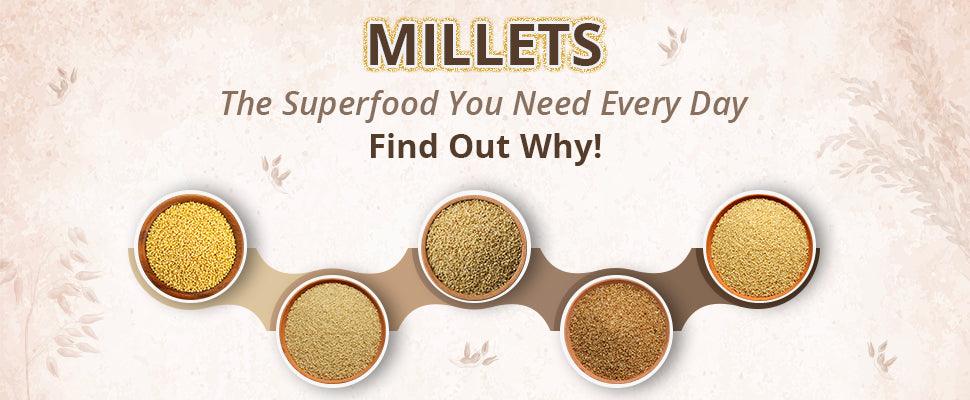
Millets, the small, seeded grass has been cultivated for more than 10,000 years. Four decades ago, millets were India’s staple food. Now, they’re being replaced by rice and wheat to the extent that people have forgotten how to incorporate them into their daily diet. Today, given the health benefits of millets, they are making a comeback from the forgotten pages of history. Not just good for health, millets play a vital role in the sustainability of the planet.
5 Types of Millets
Millets come in different shapes and sizes. The two broad categories discussed above contain numerous kinds of millets. We will take a look at some of these different types below:

1. Foxtail Millet –Foxtail millet, or indigenously called Kakum/Kangni. It contains blood sugar balancing healthy carbohydrates. The iron and calcium content present in it also helps strengthen immunity. In addition, foxtail millets help regulate your blood cholesterol and increase HDL cholesterol levels in your body.
2. Finger Millet/Ragi –Ragi is a more common name for finger millet. It is used as a healthier cereal substitute for rice and wheat. Ragi is gluten-free and rich in protein and aids brain development in growing children.
3. Pearl Millet/Bajra-Bajra is incredibly nutrient-dense. It contains minerals such as calcium and magnesium, protein, fibre, and iron. Practice regular consumption of pearl millet to fight against type II diabetes and aid weight loss.
4. Buckwheat –Go for buckwheat if your primary concern is to lose weight. It makes for a healthy food option for diabetes, helps lower blood pressure, and improves cardiovascular health. Buckwheat also fights against diseases such as gallstones, childhood asthma, and breast cancer.
5. Little Millet-Little millet is also an excellent option for those looking to lose weight. You can eat it as a rice replacement. It is high in fibre and filled with numerous minerals such as potassium, zinc, iron, and calcium. It is also packed with the health benefits of vitamin B and works as an antioxidant for your body.
Millet is rich in niacin, which is important for healthy skin and organ function. It also has beta-carotene, especially the dark-colored grains, which converts to vitamin A, helps your body fight free radicals, and supports your immune system.
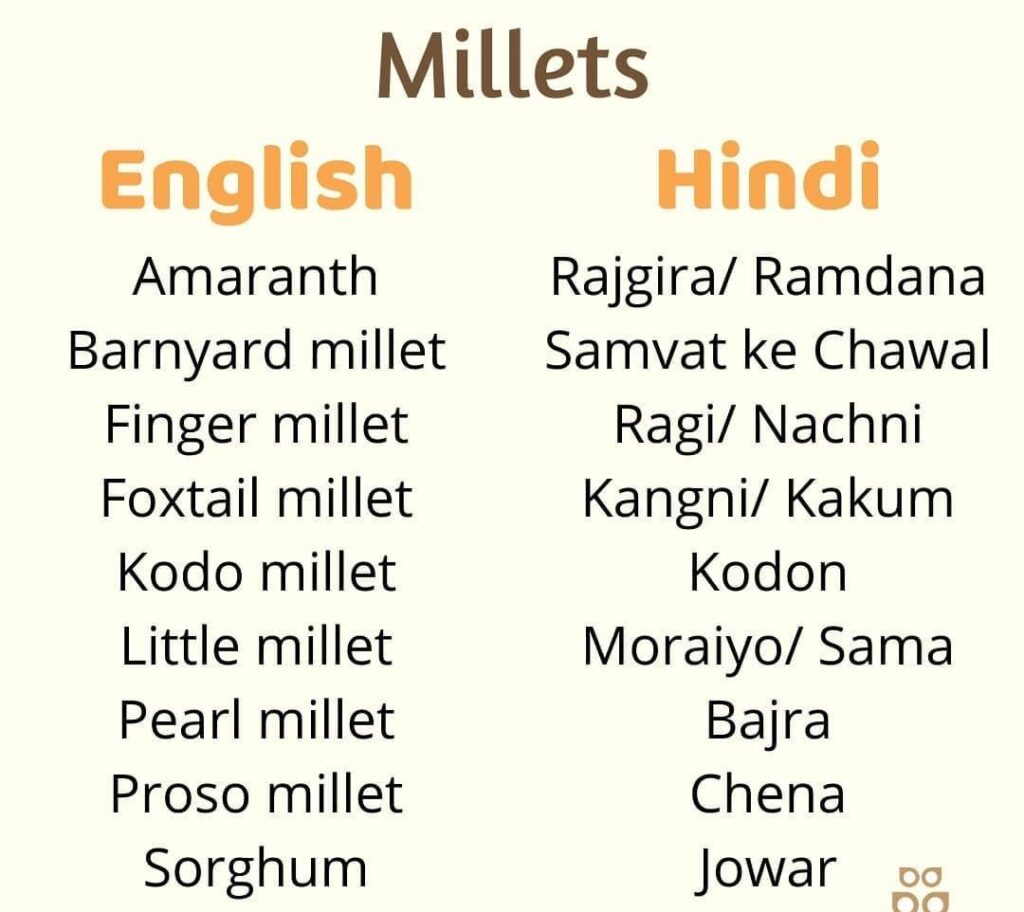
Millet also has other health benefits:
Controls blood sugar
Millets are low-glycemic index (GI) foods and can help keep your blood sugar from spiking after you eat. They contain carbs we don’t digest that help control blood sugar, plus fiber, and non-starchy polysaccharides, so millets are a good whole grain, especially if you have type 2
Improves digestive health
Millets are rich in dietary fiber, both soluble and insoluble. The insoluble fiber is a prebiotic, which means it supports good bacteria in your gut. The fiber also adds bulk to poop, helping keep you regular and reducing your risk of colon cancer.
Protects your heart
Millets are full of soluble fiber, which trap fat in your gut and can lower the cholesterol level in your blood. That can help reduce your chances of atherosclerosis, or heart disease. Millets are good sources of magnesium, too, which may prevent heart failure.
Promotes anti-aging
How your body metabolizes sugars is a major factor in how you age. Millets are full of tannins, phytates, and phenols that help protect your cells against damage and potential diseases like high blood pressure, diabetes, and high cholesterol.
Builds healthy cells
Finger millet is an excellent source of B vitamins, which play a role in everything from brain function to healthy cell division. You need vitamin B9, also known as folate, to produce healthy red blood cells.
Aid Weight Loss
Millet are rich in protein and fiber, two essential nutrients for weight loss. They help to keep the stomach fuller for a longer duration of time and reduce the unhealthy snacking habit between meals. This helps in shedding the extra kilos without compromising on nutrition.
Boost Immunity
Research states that millet consumption, both major and minor are beneficial for building immunity. Protein intake is responsible for building the body’s immunity.
Millets being a great source of protein can help develop and strengthen our immunity. Stronger immunity means fewer chances of you catching diseases.
Reduce Cardiovascular Risks
Millets contain essential fats, which provide our bodies with good fats. This prevents excess fat storage as well as effectively lowers the risk of high cholesterol, strokes, and other heart complications as stated by this study. The potassium content in millets regulates your blood pressure and optimises your circulatory system.
Prevents Asthma
The magnesium content in millets can reduce how frequently you experience migraines. It can also bring down the severity of your asthma complaints. The reason is, unlike wheat, they do not contain the allergens that lead to asthma and wheezing.
Aids Digestion
Millets are a rich fibre source that benefits digestion by alleviating bloating, gas, cramping, and constipation. In addition, good digestion keeps issues like gastric/colon cancer and kidney/liver ailments away.
Millet Nutrition
Millet is rich in protein and calcium and has more essential amino acids than most other cereals.
It’s also an excellent source of:
- Vitamin A
- Vitamin B
- Phosphorus
- Potassium
- Antioxidants
- Niacin
- Iron
Nutrients per serving
A quarter-cup of dry millet contains:
- Calories: 189
- Protein: 5.5 grams
- Fat: 2 grams
- Carbohydrates: 36.5 grams
- Fiber: 4.25 grams
- Sugar: Less than 1 gram
- Sodium: 2.5 milligrams
Portion sizes
Like other grains, such as wheat or corn, millet isn’t a low-calorie food, so eat it in moderation. A single serving of cooked millet is about 1 cup. Millet expands when cooked, so pay attention to how much you’re serving.
How to Cook Millet
You can buy millet in grocery stores, health food stores, and online. It’s sold dried, puffed, or ground as flour.
Dried millet can be cooked like couscous or quinoa. Millet flour is a good substitute for whole-wheat flour. You can eat puffed millet as a snack or use it instead of puffed rice cereal.
To cook millet, combine 2 cups of water and 1 cup of millet in medium saucepan. Bring the mixture to a boil, then reduce the heat and let it simmer with a lid on for about 15 minutes (or until the millet absorbs most of the water). Remove the saucepan from the heat and let it sit for 10 minutes with the lid on until the millet absorbs any remaining liquid.
Soak the grains in water for several hours before you cook them. This will help decrease some of the grains’ phytic acid, which can make you less able to absorb some nutrients. For a nuttier flavor, toast the millet in the saucepan for a few minutes before you cook it.
Try these ideas for adding millet to your diet:
- Bake some bread with millet flour.
- Try a millet and mushroom risotto.
- Use millet as the filling for stuffed eggplant.
- Mix millet flour in a batch of waffles.
- Snack on puffed millet instead of popcorn.
- Add toasted millet for crunch to your salad.
- Make a millet curry or stew.
Sharing few Recipes below- so you can include these super food interesting and yummy ways-
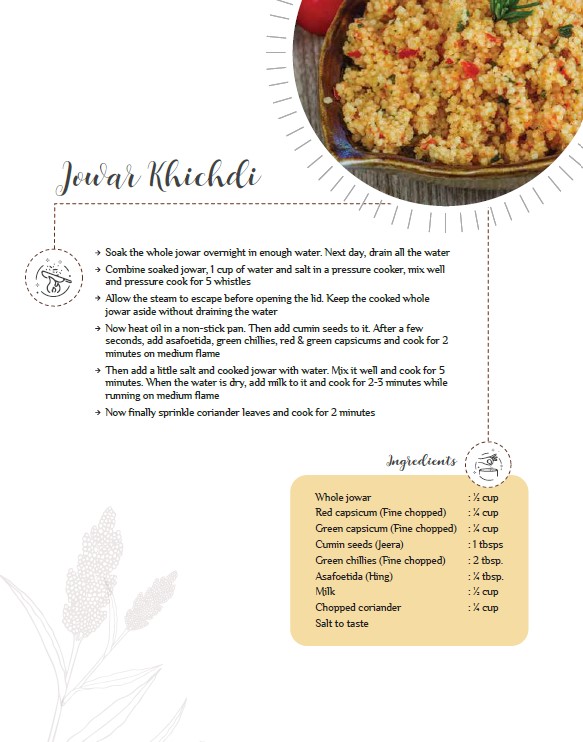

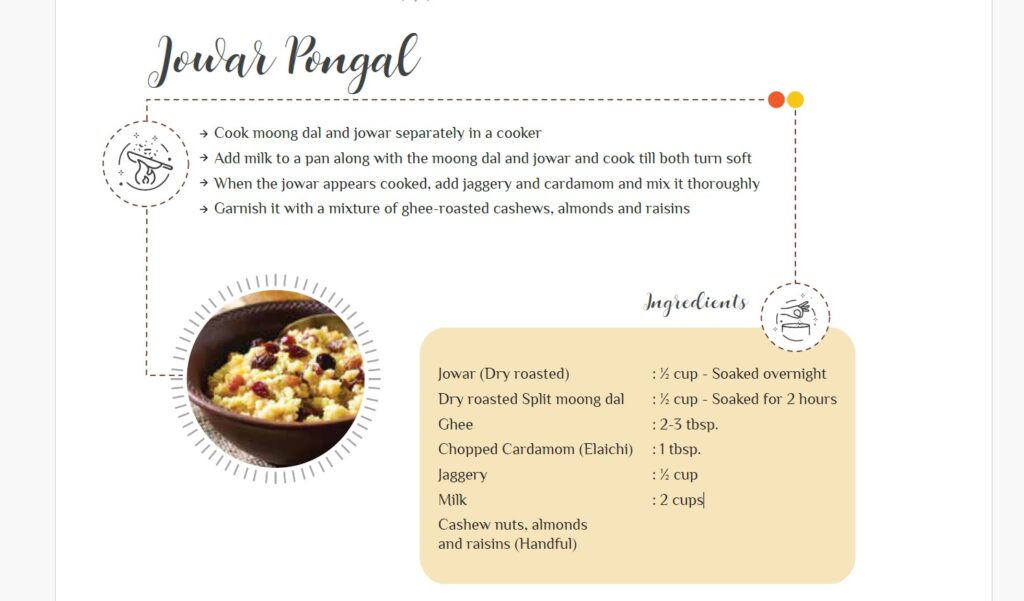

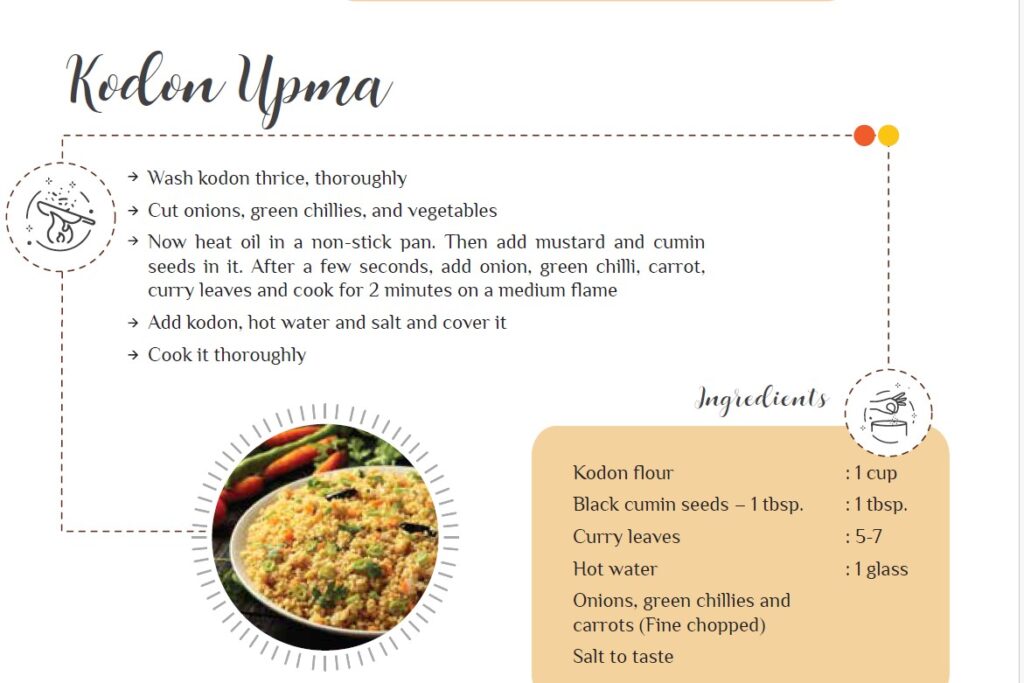
There are many ways to include millet in your diet. You can use this food grain as a cereal substitute, make porridge, or infuse it into cupcakes – the uses of millets in cuisine are endless. So include this superfood in your everyday diet and notice the positive changes it brings to your life.
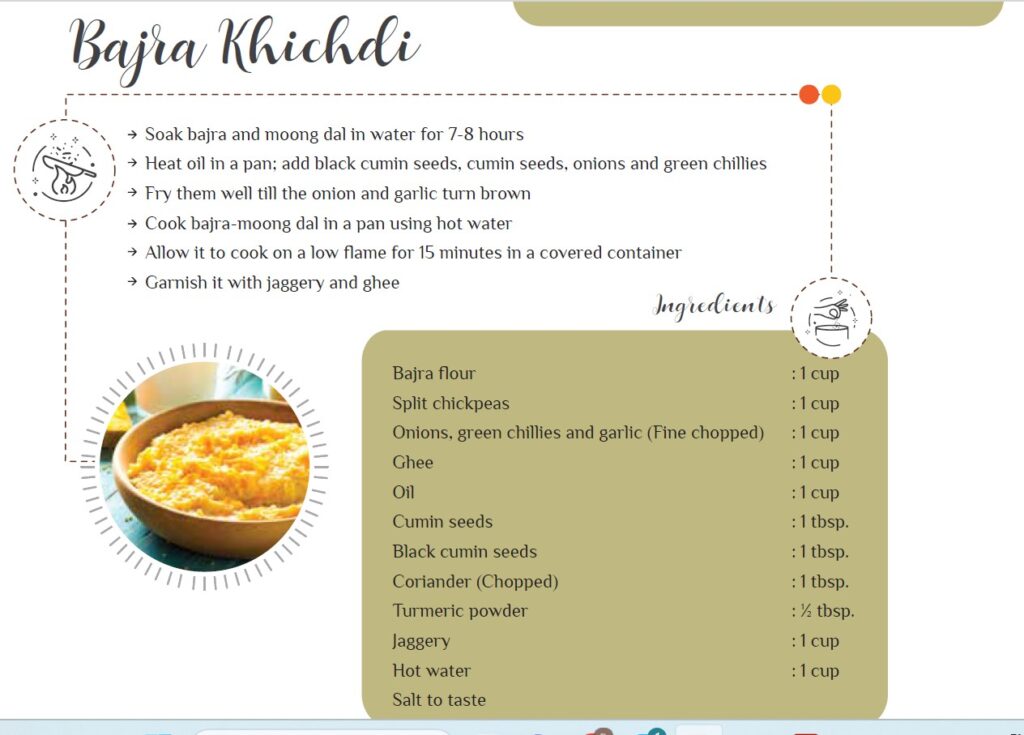
And if you need a detailed eating plan-you can connect directly, i consult across the globe and i am based in Mumbai so that i can help you eat right and achieve your health goal.
Be Happy Be healthy Always.
